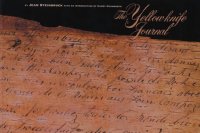|
________________
CM . . . .
Volume VI Number 20 . . . . June 9, 2000
excerpt: "Steinbruck's journal is full of references to food. There was some dried and "pounded" meat available at the post, highly concentrated but difficult to eat without grease. There were occasional gifts of fish from natives encamped nearby, while others brought in meat or fish which they sold for trade goods. The most dependable source was fish caught in nets or on lines, though even this source could not be depended upon, and more than once the traders went hungry. In the thinnest times they were not above eating wolverine, a dainty dish about whose merits the least said the better." (Introduction, p. 15)This is a very unusual but engaging book which will be of value to anyone interested in the history of the fur-trade and the exploration of Canada's Northwest. The journal in question was kept by one Jean Steinbruck, who, during the winter of 1802-03, was in charge of a small Northwest Company winter trading post near Great Slave Lake. Steinbruck was himself a somewhat enigmatic figure, reputed to be a deserter from the Hessian force brought to North America during the America Revolutionary War. The German-speaking Steinbruck drifted into the service of the Northwest Company during that Montreal-based enterprise's commercial conflict with the Hudson's Bay Company and the so-called XY Company. Steinbruck taught himself a curious phonetic French and ironically was to leave the only extant French birchbark journal (birchbark being used during this time when paper itself was in short supply). The journal comprises 14 pieces of birchbark, each approximately 5" by 9-10" in size. These leaves have been attractively photographed in colour; and on the facing page of each is a French transcription and an excellent English translation (no mean feat, given the quality of both the birchbark and Steinbruck's curious French). The day-by-day entries are themselves a mixture of trading details and the various events surrounding survival and interpersonal relationships. The book is introduced by an excellent overview prepared by Harry Duckworth. This introduction, itself a mini-history of the historical context as well as of the journal, is accompanied by maps which place the events in their geographical setting. It provides as well a comprehensive overview of the fur-trade and exploration activities of the period (including some rather startling pictures of such individuals as Alexander Mackenzie - with whom Steinbruck worked for a time - and other less reputable members of the trading fraternity, one of whom ultimately murdered the author. With the aid of this introduction, the otherwise rather cryptic and sometimes enigmatic journal entries can be understood; and the journal becomes a very useful teaching tool. Students can be given first-hand experience in dealing with primary documents, and an appreciation of the work involved in deciphering and interpreting such "raw material." For any reader, the book provides an insightful glimpse into a fascinating period in the country's development, and into the individuals responsible for that early development. Recommended. Alexander D. Gregor is a professor of the History of Education in the Faculty of Education, University of Manitoba.
To comment on this title or this review, send mail to cm@umanitoba.ca.
Copyright © the Manitoba Library Association.
Reproduction for personal use is permitted only if this copyright notice
is maintained. Any other reproduction is prohibited without
permission.
Published by
TABLE OF CONTENTS FOR THIS ISSUE - June 9, 2000.
AUTHORS |
TITLES |
MEDIA REVIEWS |
PROFILES |
BACK ISSUES |
SEARCH |
ORDER |
CMARCHIVE |
HOME
|
